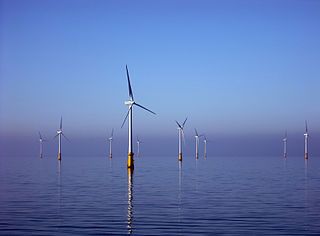Renewable Energy: You’re Looking At It; You Can See It At Work

Thanks for this. First, while it’s true that he lacks diplomacy, that’s the least of my issues with Alex and his viewpoints on the subject. The reality is that, for example, we’re signing PPAs for wind energy in certain parts of the U.S. this week for $0.02/KWh, about half of what it takes to make a KWh of electricity from coal. Simultaneously, the 66 GW of wind we’re generating right this minute in the U.S. alone is off-setting power generated from fossil fuels, which otherwise would have spewed huge amounts of CO2, methane, oxides of nitrogen and sulfur, cadmium, selenium, mercury, and an array of radioactive isotopes into our atmosphere and oceans. To say “renewables don’t work” is like looking at an airplane in flight and saying “that’s impossible.” I mean, you are looking at it; that should count for something….
I would also comment that you talk about LFTRs (liquid fluoride thorium reactors) as if they actually exist. They don’t. I’m not saying they’re a bad idea; in fact, I love the idea, and I hope with all my heart that it is developed and deployed quickly. But I’m not sure it’s reasonable to compare something that actually exists right here and now on our planet with something that doesn’t.

Craig: These people continue to try to put renewables down, but really can’t.
Another point, for most of the countries in the world 9save the US) is the trade benefits of not having to buy dollars to pay for oil while generating locally, which provide jobs, taxes, and on top …are good for our environment.
Nobody mentions this, and nobody does the numbers, but just by not having to import oil,gas, or even electricity the trade benefits are real.
You’re exactly correct. Thanks for pointing this out.
Wind’;s “displacement” of fossil energy is illusory — when it doesn’t blow, Germans burn stuff.
If they simply maintained their nuclear,as France, Ontario, etc. do, they’d need no burning, as France, Ontario, etc. don’t need.
This piece is unacceptibly unscientific & deceptive.
Wind is a poorly performing, expensive, heavily subsidized con job supported by the carbon companies because they get to back up these bird, bat and people killers with primarily carbon burners. To vote for wind or solar – unless you work just as loudly for nuclear is a vote for more CO2 and methane.
If Wind and solar are so inefficient, then why is the great state of Texas, an oil producer in a big way, investing so much in wind power? It seems that Alex Cannera is the one that must check his numbers and sources.
Another point: Wind and solar are gaining recognition as a good investment all over the world, I wonder why…
Bird bat and people killing?
Bird and bat I can understand though in the case of birds, the numbers pale into insignificance compared to the numbers killed by domestic cats, collisions with vehicles, habitat loss, and accidents with buildings and power lines.
The importance or otherwise of wind turbine related bird deaths depends on which species are killed, an occasional pigeon or mallard duck will not significantly impact populations, whilst eagles and condors would be a far greater cause for concern.
Environmental impact assessments are performed before any new wind farm during which risk to birds and bats is assessed, and minimised.
Killing people? There are occasional accidents involving wind turbines as will always be the case with working at height. There are even very occasional deaths involving members of the public (without involvement in the wind industry) such as the case of a woman parachutist who landed on a rotating wind turbine blade.
These however are rare, with wind power killing 100 times less per trillion kWh than US coal.
See energy death print
http://www.forbes.com/sites/jamesconca/2012/06/10/energys-deathprint-a-price-always-paid/
Worldwide, coal kills an average of 170,000 people per trillion kWh – (15,000 per trillion kWh in the US which has good safety standards).
Natural gas, 4,000 per trillion kWh
Solar 440 per trillion kWh
Wind 150 per trillion kWh
Nuclear 90 per trillion kWh
That’s very interesting. I also look at the likely trends here. Safety issues associated with wind are a huge deal to the industry; they’re constantly making progress in this regard. You ought to attend their shows (AWEA); they’re packed with vendors with cutting-edge safety solutions.